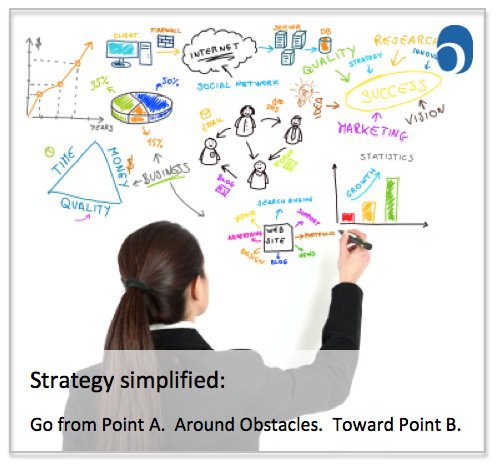 I was talking to a colleague about a project we’ll launch for her senior leadership team and the importance of framing this work in terms of strategic value. In our work, normally that means, “How do we increase and leverage emotional capital to create enduring value?” It’s about strengthening the leadership capacity to foster a vibrant organizational climate to deliver superlative value to clients. Powerful, but I’d like to simplify… a lot.
I was talking to a colleague about a project we’ll launch for her senior leadership team and the importance of framing this work in terms of strategic value. In our work, normally that means, “How do we increase and leverage emotional capital to create enduring value?” It’s about strengthening the leadership capacity to foster a vibrant organizational climate to deliver superlative value to clients. Powerful, but I’d like to simplify… a lot.
My son, Max, has become very excited about fencing, and I explained to him that strategy means:
You’re at “point A” and there’s stuff going on around you. You want to get to “point B”… so you make a plan and go for it… and then do it again.
So strategy boils down to four simple ingredients:
- Where are we now?
- What’s going on around us?
- Where do we want to go and why?
- How do we move forward?
The point of our consulting work is that if you actually want real answers to these questions, in addition to the business and rational side, we have to look at the human, emotional dynamics.
And… this is where it gets “un-simple” again. Thinking about this as an expert on emotions, som several “minor” challenges emerge…
- It’s hard to know where you are if you don’t have self-awareness and you only look at the surface of the situation.
- What’s going on around is changing all the time, and if you’re not tuning in constantly, your plans fail before you start. Especially in a VUCA environment *
- When you’ve got 100 people, you probably have 200 destinations and 300 reasons why – somehow you must create alignment or entropy takes over.
- You might have a logical, sensible plan on how to move… but people are not just logical and sensible.
* VUCA = originally a military acronym for conditions of volatility, uncertainty, complexity and ambiguity. Yes, that’s another word for “these days” and it makes planning a wee bit harder.
Amazing how such a simple idea is so confounding. The good news is that we CAN measure and plan for these.
PS. Here’s a very brief article I wrote with a simple graphic that could capture strategy!


